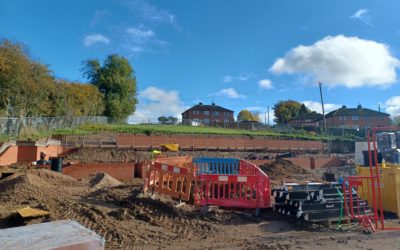How affordable housing benefits rural communities
Providing affordable housing for local people with specific housing needs is a crucial part of maintaining vibrant, active and thriving communities in the towns and villages throughout Shropshire.
In rural parts of the county, providing affordable homes that enable local people to stay in the area is especially important – not just for the survival of these communities but to ensure they continue to benefit from the services they rely on.
There are many misconceptions around the term ‘affordable housing’, but it’s important to understand why it’s needed and how it benefits rural areas.
In Whitchurch and its surrounding villages, the average house price is £180,000 and the average household income is £26,865.
This translates to a ratio of 6.7, which means that typical house prices are almost 7 times more than the average income, while mortgage multipliers are typically based on a ratio of 4.
The widening gap between the average household income and the average house price in Shropshire is making it increasingly difficult for local people to afford to buy a house within their community on the open market.
Affordable housing is sought by a diverse cross section of people, including first-time buyers seeking to move out of their parents’ house or rented properties, staff working for local employers who can’t afford to live nearby, couples requiring more space for a growing family, existing homeowners needing to downsize to reduce their mortgage, or older people needing accommodation which supports mobility restrictions.
If it isn’t possible for people to stay in their community, they ultimately have to seek affordable accommodation elsewhere.
Additionally, if they work for a local employer and can’t afford to live nearby, it also becomes challenging for local employers to attract and retain the staff they need, which can affect the local economy.
This gradually leads to a decline in parish populations in rural areas, which can then have a significant impact on the whole community.
For example, fewer families could ultimately mean rural schools face closure, while a population decline could also lead to the closure of local shops, pubs, post offices or other important community hubs that form a key part of an area’s identity.
These hubs and services present a lifeline to rural communities, particularly for those in more isolated areas.
That’s why it’s essential that we find solutions that make home ownership accessible to those who need it most, enabling them to stay in their local area and contribute to making it a vibrant community.
Affordable housing schemes such as Community-Led schemes can also help to protect and improve the quality of existing homes, as well as building properties with higher design standards and energy efficiency ratings to support sustainability targets.
By providing affordable housing in these areas, in partnership with parish councils and residents, we can help to safeguard the future of our rural communities – together.



